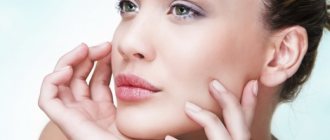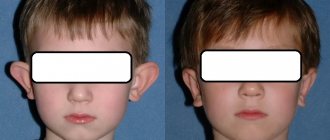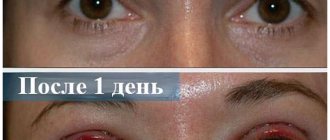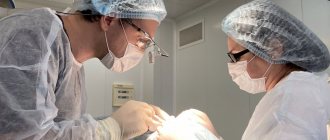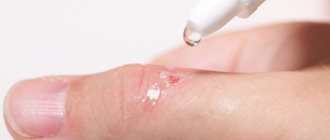Effect after Fraxel
With the help of Fraxel, it is possible to achieve skin rejuvenation even after a single session. Thanks to photothermolysis, the relief of the skin is smoothed, the tone becomes more even, focal hyperpigmentation is eliminated, small wrinkles, scars, the effects of burns or acne are removed, tone and elasticity are normalized, and pores are narrowed.
Subjective sensations
The entire rehabilitation period is about 2 weeks. The first positive results can be noted within the first week after Fraxel, but for some time you will have to be patient. Certain subjective sensations may be unpleasant. For the first few days, it is better not to go to work and try to avoid contact with strangers.
Swelling is possible, but lasts only 1-2 days. Peeling and redness of the skin may last longer and even cause some inconvenience. The intensity and duration of such manifestations depends on the degree of exposure to the patient’s skin, the depth of laser penetration and the individual characteristics of the body.
Peeling and redness are caused by the restoration of the surface layer of the epidermis. As a result of Fraxel treatment, dead and damaged cells are removed and intensively replaced with new ones. Peeling is the rejection of the layers of skin being removed. Redness (hyperemia) indicates an intensive process of restoration and formation of new cells. The entire process of replacing the old epidermis with a new one takes about a week, but the intensity of peeling decreases after 3-4 days.
Many patients complain of a burning sensation, the face “burns” as if from a sun or heat burn. This is also normal and should not cause much concern. The burning sensation indicates that the recovery process is taking place intensively.
or leave a comment
Case from practice
A 28-year-old patient came to me with complaints of rashes on the skin of the face, legs and hands in the form of papules and pustules against a background of erythema, accompanied by itching and hyperesthesia. The rash first appeared 5 days after a retinoic peeling containing 5% retinoic acid was performed by a cosmetologist.
The cosmetologist who performed the procedure recommended using hormonal ointment 2 times a day for 5–10 days. The rash disappeared but reappeared as soon as the patient stopped using the drug.
During the medical history, it turned out that a month before the retinoic peeling, the patient underwent a median glycolic peeling procedure.
Retinoic dermatitis
The cosmetic procedures carried out thinned the epidermis, and the regenerative capabilities of the patient’s skin weakened. As a result, retinoic dermatitis, which can develop after retinoic peeling, was more pronounced in this situation.
It should be noted that the use of topical and systemic glucocorticosteroids is appropriate only for retinoic dermatitis, which occurs with disturbances in the general condition of the body: increased body temperature, erythroderma. In other cases, their prescription, and then cancellation, can lead to the development of even more pronounced retinoic dermatitis.
Therapy
As a result of the examination, the patient was prescribed therapy aimed at relieving the symptoms of retinoic dermatitis.
- Take an antihistamine once a day, at night, for 10 days to relieve itching.
- Take enterosorbents – 1 dessert spoon once a day between breakfast and lunch for 10 days.
- Apply a thin layer of zinc paste to areas of skin with manifestations of retinoic dermatitis once a day, at night, for 5 days.
- Apply the softening emulsion to areas of skin with manifestations of retinoic dermatitis 2 times a day for 2 weeks.
In 2 weeks
Two weeks later the patient came for examination. Manifestations of retinoic dermatitis have regressed. The itching has stopped. The patient was satisfied with the result of the treatment.
I recommended that she use sunscreen for 1 month and not exfoliate before 3 months. In addition, the patient was strongly advised not to use hormonal ointments without consulting a dermatologist.
***
Retinoic peeling often leads to manifestations of retinoic dermatitis. Therefore, when performing such a procedure, it is necessary to warn the patient about a possible adverse reaction and give recommendations for skin care.
If the patient needs several retinoic peeling procedures, but after the first procedure severe retinoic dermatitis appears, then subsequent peeling procedures can be replaced by daily application of the Retasol® solution for 7–10 days, with breaks between courses of 1 month, but not more than 3 courses in a row and only in winter.
Patients will thank you!
Anna Vyacheslavovna Karpova, Ph.D. honey. Sciences, dermatovenerologist, cosmetologist, associate professor of the Department of Aesthetic Medicine of the Federal Medical Education and Science Institute of the People's Friendship University of Russia
or leave a comment
Natalia
|
02.05.2021 00:00
Hello! Can you please tell me that the appearance of small red pimples with a white head is characteristic of retinoid dermatitis? I burned the skin on my cheeks with retinol cream and it got worse and worse (((Hello! Unfortunately, in order to make our recommendations, we need to observe the clinical picture. We advise you to consult a doctor.
Julia
|
22.10.2019 22:36
Anna Vyacheslavovna thank you very much for the detailed tactics for managing such patients!!!Hello Julia! I'm glad that the information was useful to you.
Oleg
|
13.04.2018 16:48
Why use enterosorbents in this case?Hello, Oleg! The task of enterosorbents is to bind and remove immune complexes from the body and general adsorption.
Seal
Rehabilitation rules
If you follow the doctor’s recommendations, rehabilitation will not cause major problems, and the effect after Fraxel will be more pronounced.
Patients must adhere to the following rules:
- Avoid exposure to direct sunlight and artificial ultraviolet radiation. At this time, it is better to be outdoors less often, and if you do have to go outside, you need to wear a wide-brimmed hat and sunglasses. Solarium is contraindicated.
- To reduce burning and peeling, you can use mild moisturizing creams and masks. Any peeling of peeling areas is contraindicated. Panthenol has a good restorative effect.
The response to Fraxel and the duration of rehabilitation are individual for each person. The maximum positive effect after the procedure depends not only on the skill and experience of the doctor, but also on how carefully the patient follows his recommendations. In our cosmetology clinic you can use the skin rejuvenation service using laser fractional photothermolysis and undergo a full course of rehabilitation under the supervision of specialists.
How peelings work
The winter period with low solar activity is traditionally considered in our region to be the season for peeling procedures. Taking advantage of the lack of active summer sun, cosmetologists carry out the most aggressive procedures, after which your face swells, sometimes even hurts, and then for another week you change your skin like a snake.
Very often, post-peeling skin irritation is perceived negatively by clients, which is understandable. However, it is worth understanding that in the case of medium and deep peels, it is inflammation that is key to the rejuvenation process. We will look at the stages of this wonderful update. But first, I’ll tell you what kind of peelings there are.
Types of peelings
Superficial peels
act on the stratum corneum. With their help, you can improve the texture of your skin, making it look younger. This is the most popular type of peeling today. The main agents here are the famous ANA and BHA acids.
Medium peels
affect the epidermis, i.e. living layers of cells down to the dermis. These include retinoic, TCA (trichloroacetic acid 10–40% acid), Jessner peel. Such peels are used for pronounced signs of aging, wrinkles of medium depth, loss of turgor, tired face, etc.
Deep peelings
- phenol and peeling with trichloroacetic acid (concentration more than 50%) - penetrate even deeper, this is the most aggressive procedure, causing necrosis of the epidermis and dermis. It is recommended to do such procedures once every few years.
Acidic (with acids) peels change the pH in the stratum corneum, which activates the work of proteolytic enzymes. As a result, desquamation occurs, i.e. accelerated exfoliation of the stratum corneum.
Retinoic (yellow) peeling works according to a slightly different scheme; in this case, acidification does not occur; retinoids directly affect the maturation of living cells, which begin to divide faster and move upward faster, thereby pushing “old” cells to leave the stratum corneum faster. That is why after such peelings the skin does not “flake” but “comes off in layers.”
What complications may appear in the post-peeling period? 45
- Exacerbation of herpes. After peeling, herpes may worsen. This is expressed in the spread of the process throughout the entire skin of the face, tissue scarring. To prevent this complication, the cosmetologist must be careful about collecting anamnesis. If it is discovered that the patient suffers from a herpetic infection several times a year, the doctor may prescribe preliminary anti-relapse therapy. During periods of exacerbation of herpes or acne, peeling cannot be performed.
- Infection. If an infection occurs during the procedure, pustules and purulent crusts may appear after the session. To combat them, topical or systemic antibiotics can be prescribed, depending on the clinical picture.
- Allergy. The development of an allergic reaction is rare. It manifests itself in the appearance of swelling, itching, and hyperemia. Your doctor may prescribe the use of antihistamines.
- Persistence of edema and hyperemia longer than expected. Normally, swelling and redness after peeling goes away after a few hours or days. If more than 10 days have passed and swelling and redness are still present, this may indicate that the damage from the peel has exceeded the skin's individual repair capabilities. To relieve this condition, the use of anti-inflammatory drugs may be required.
- Hyperpigmentation. To avoid this complication, the cosmetologist needs to carefully collect anamnesis. Patients with endocrine disorders and women taking contraceptives are at risk. It is also not recommended to undergo the procedure during periods of active sun.
Pimples* on the décolleté: causes and treatment
Acne can manifest as a comedonal, papular pustular rash on the neck and décolleté, back and arms, and face9. The reasons for its occurrence are different: hormonal disorders, unhealthy diet, chronic gastrointestinal diseases, use of cosmetics with comedonal components, etc.49. It is important for the doctor to understand why the patient has the rash in order for treatment to be effective.
For mild to moderate acne, manifested by the appearance of pimples* on the décolleté or other areas of the body, Azelik®5 gel can be used. The main component in its composition is azelaic acid5. The drug helps to normalize keratolytic processes, reduce the level of free fatty acids on the skin, reduce the metabolism of neutrophils and the free radical forms of oxygen they produce, resulting in an anti-inflammatory effect5. Azelik® gel exhibits antimicrobial activity against Staphylococcus epidermidis and propionibacteria5.

